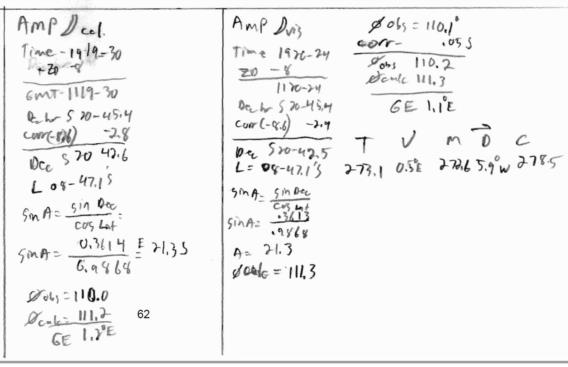
NavList:
A Community Devoted to the Preservation and Practice of Celestial Navigation and Other Methods of Traditional Wayfinding
From: Jeremy C
Date: 2021 Feb 15, 16:32 -0800
Hi Bob,
I've shot amplitudes of the moon a few times. If you calculate the exact bearing and moment of moonrise, and can acutally see it happen, you just shoot the bearing the moment the upper limb breaks the horizon. You then reduce it no rmally using the standard formula or table. The other way is to take the amplitude of the moon when the center of the body is on the visible horizon and apply half of the the second table correct in reverse (towards the elevated pole). TBH, this second correction is typically very small.
As to the phenomenon, Frank can probably better explain it, but unlike other bodies where they are above the visible horizon when they are on the celestial horizon, the moon is on the celestial horizon when the upper limb first becomes visible.
How accurate is a moon amplitude? Well there probably isn't enough real-world data on it, but not as good as other bodies from my very limited experience.
I'm old enough to remember when the USCG asked moon questions, so you just follow the Bowditch rules and the correct answer should be there.
I've attached a couple of my moon amplitudes. I shot them the same day.







